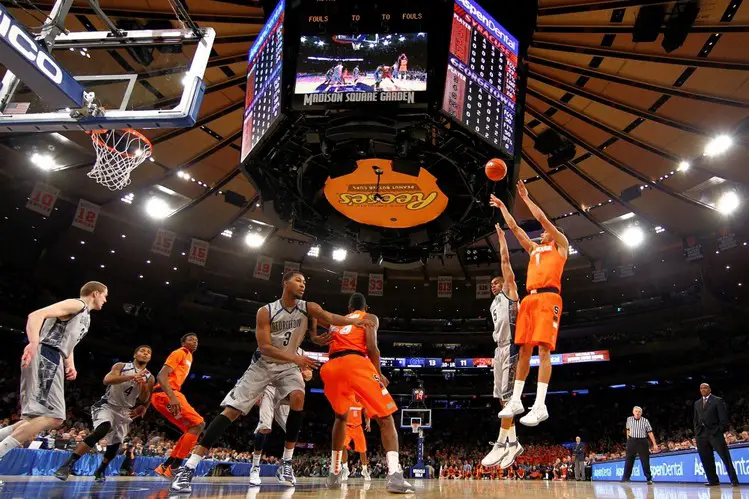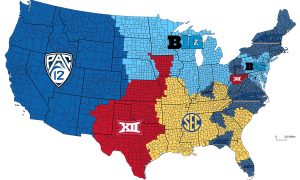We’ve seen profanity-laced press conference rants, jacket ripping and NCAA violations. It’s all led us here: the number one controversy in Syracuse basketball history.
Indeed, the most important thing that ever happened in the history of Syracuse Basketball was joining the Big East. 
Nobody too far outside of Central New York knew anything about Syracuse University before the league was created by Dave Gavitt. It was a league built on big markets, wildly charismatic coaches and an upstart cable sports channel called ESPN.
The inaugural Big East champion was decided inside Manley Field House. SU was on a 57-game game winning streak on the home floor. Georgetown won 52-50. A rivalry was born.
Starting in 1983, the conference tournament was moved to the mecca of basketball, Madison Square Garden. 
“That made the league,‚Äù said Jim Boeheim in ESPN‚Äôs 30 for 30 Requiem for the Big East, ‚ÄúKids wanted to be there for those games. In reality, the Big East tournament didn’t mean that much because of the importance of the NCAA tournament, but don’t tell that to the coaches and players.”
That same season, New York City streetball child prodigy Dwayne “The Pearl” Washington committed to Syracuse.¬† He was the number one recruit in the nation. That put the Orange on the map for good. There’s no way Syracuse is landing a recruit like that without the Big East.
The conference was the biggest thing going in college basketball in the 80’s. But it was a ticking time bomb. The money is in football. The Big East had very little to offer.
Boston College, Pittsburgh and Syracuse were three high quality football programs, but they played as independents. After Penn State joined the Big Ten, major conferences realized they can increase their television market value by adding football programs. 
Throughout the 90’s, the Big East scrambled to add more football programs like Miami, Virginia Tech and Rutgers. A game of musical chairs persisted for another decade, with schools coming and going, some were football members, some basketball, some both. What started as a tight knit 8-team basketball conference had become a fractured 15-team conference with competing interests coming to a head.
Boston College and Miami spurned outrage in 2003 when they fled to the ACC. BC was especially scorned, as a former member of the “Old Big East.” That was the beginning of the end.
In the summer of 2011, the Big East turned down a television deal from ESPN that would have paid each school 17 million dollars. That’s when Syracuse and Pittsburgh jumped ship to the ACC. Boeheim has maintained that if that television deal was signed, nobody would have left.
Here’s where the controversy comes in. Some people, especially Georgetown Hoyas, love to blame Syracuse for the fall of the Big East. Let’s unpack that.
It didn’t take long after Syracuse’s departure for the Big East to reorganize into a basketball only league anchored by their seven catholic schools. The conference is a shell of what it once was, and even conference championship games at Madison Square Garden can’t change that. If Syracuse and Pittsburgh were still in the fray, there would be a lot more juice. 
It’s still not fair to blame Syracuse. If Boston College, Virginia Tech, Miami, West Virginia, Rutgers and Notre Dame all decided to leave, then guess what? Maybe the problem wasn’t Syracuse. The conference was a mess. Syracuse didn’t kill the Old Big East- it was already dead.
Was the move made because of money and football? You’d have to be a moron not to see that. But let’s not pretend the Orange weren’t stepping into the best basketball conference in the country. This was a no-brainer for business. In what world is loyalty to a conference going to a trump that? 
Capitalism killed the Big East, not Syracuse.






















